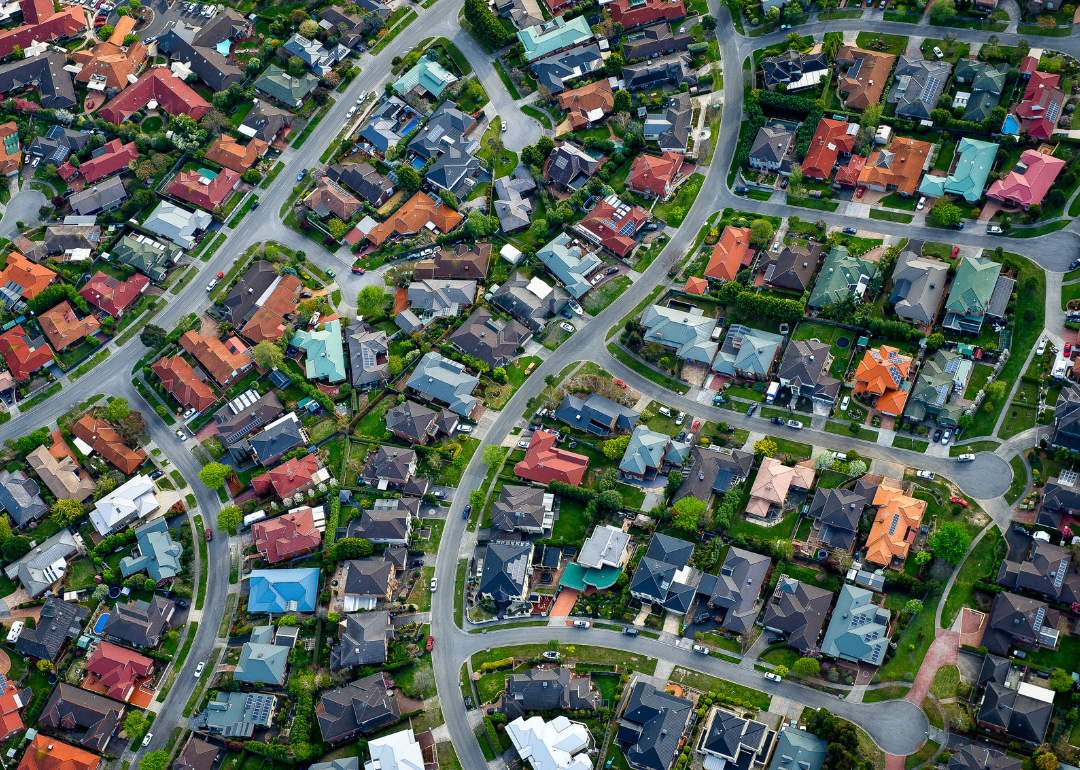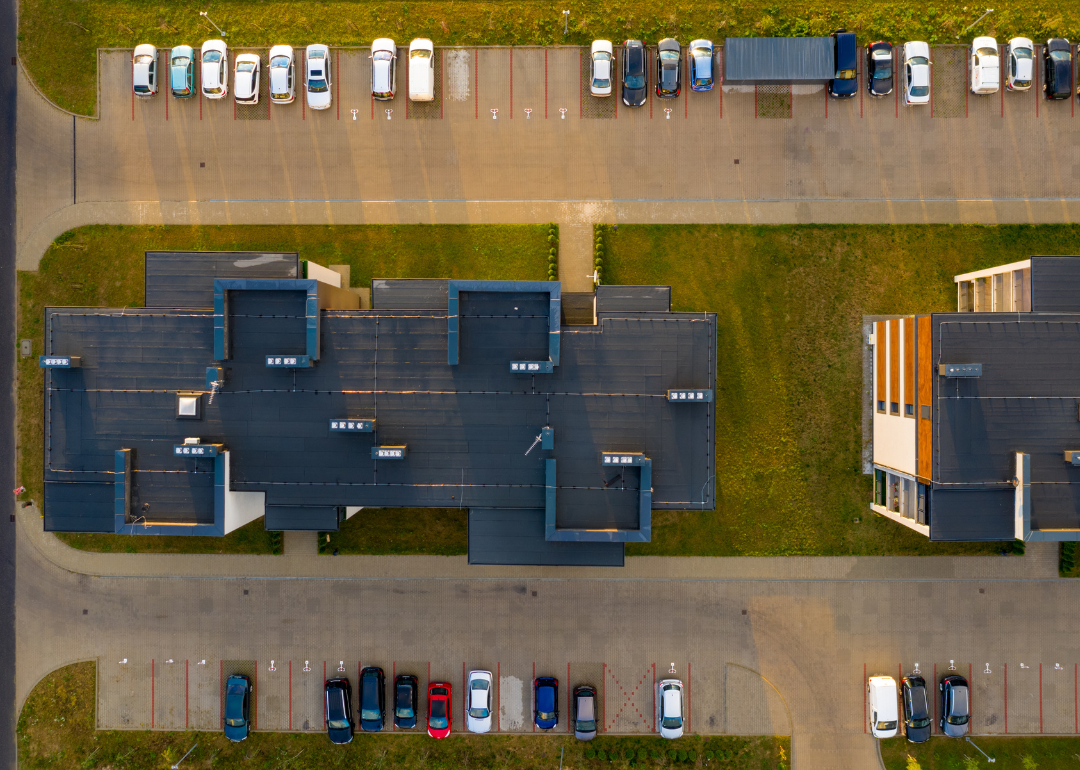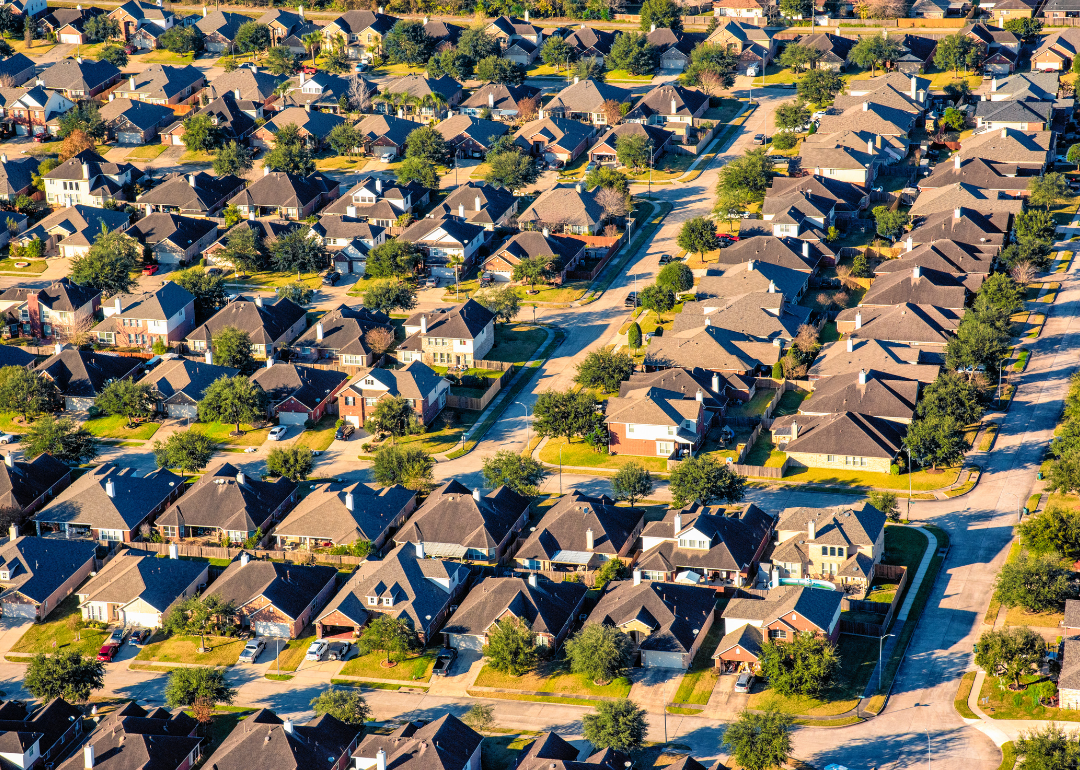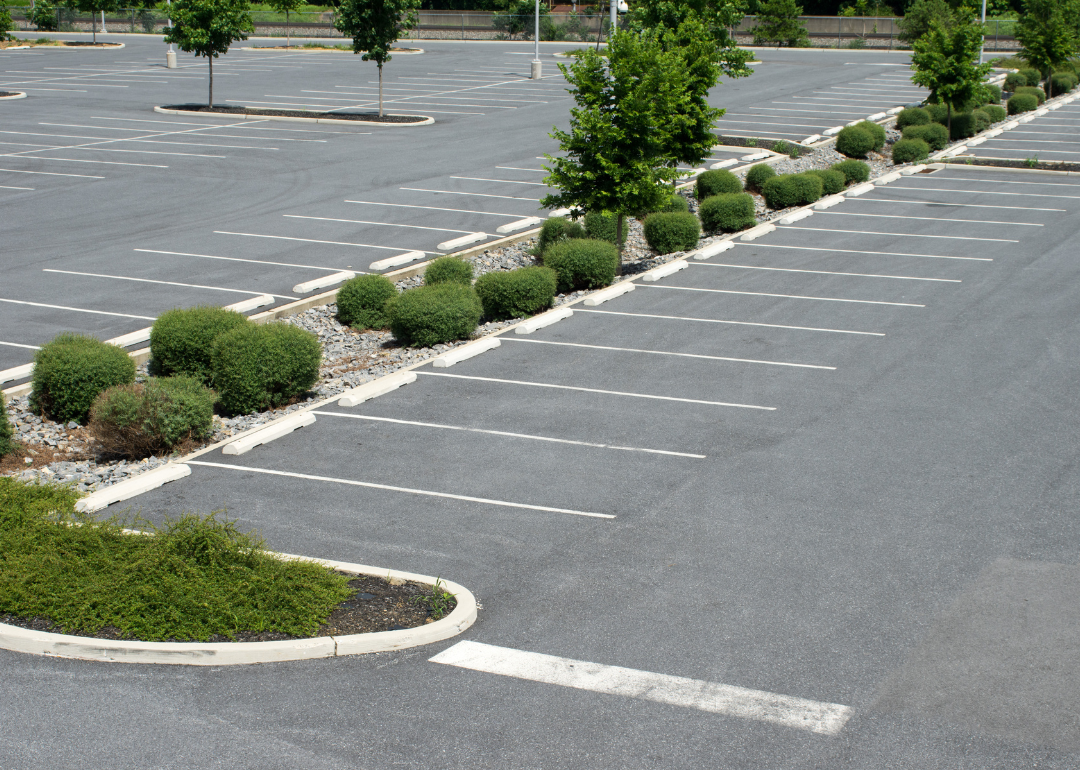The unseen barriers hindering affordable housing in your town

Canva
The unseen barriers hindering affordable housing in your town
An aerial view of a suburban neighborhood.
Although many Americans aspire to predetermined notions of what an American home and neighborhood should look like, the stark shortage of affordable housing makes those visions increasingly difficult to realize. In October 2021, about half of Americans reported the lack of affordable housing as a major problem in their communities. This number increased by 10% from early 2018, and in the same survey, 7 in 10 respondents stated young adults have more difficulty buying a home than their parents did.
Vacancy rates help show order or imbalance when it comes to housing supply and demand. Vacancy rates for rental units dropped from about 8.7% in 2012 to about 5.8% in 2022, pointing to fewer affordable housing options across the last decade. While the lack of affordable housing is clear, there isn’t yet alignment from government officials, builders, would-be tenants, and single-family homeowners on how to address the issue.
Foothold Technology gathered information on housing development and zoning from local governments, housing research institutes, and think tanks to explore some of the reasons behind the shortage.
America’s complicated housing shortage is the sum of its parts in that each driving force behind our lack of housing from zoning to approval processes is convoluted and often misrepresented. Continue reading for a breakdown of the unseen barriers affecting affordable housing in your community.
![]()

Canva
Traditional zoning practices prevent the development of ‘missing middle housing’
The exterior of a multifamily residential building.
Zoning covers a range of building specifications but generally describes what gets built where and how land is used. Exclusionary zoning laws dictate the types of buildings allowed in a neighborhood and commonly prohibit multifamily homes. These laws started being adopted in the early 1900s with stated goals such as preventing fire hazards and preserving air quality but were often used to restrict minority groups’ access to certain neighborhoods.
After years of blatant discrimination via zoning laws, in 1917, the Supreme Court abolished race-based zoning. Still, certain cities continued to use these laws to stifle growing numbers of Black families or price minority groups out of areas altogether. Due to exclusionary zoning, 1 in 4 Black Americans and 1 in 6 Hispanic Americans living in poverty are in a high-poverty neighborhood, according to The Century Foundation.
A trend toward zoning mandates during the 20th century that favored building types less likely to be afforded by people of color and low-income families led to most areas in many American cities being zoned for single-family homes with expensive building requirements and prohibiting other forms of construction regarded, en masse, as middle housing. Currently, as much as three-quarters of the residential land in many American cities is zoned solely for single-family homes.
Ordinances still vary from city to city, but supporters of such measures argue they’re preventing adverse impacts of unbridled development on nearby neighborhoods. Opposition to new development through zoning regulations is characterized as NIMBYism, short for “not in my backyard.” Concern over changes to communities and skepticism around market forces prevents updates to single-family zoning, which maintains housing scarcity and high prices.
While zoning can be a helpful tool for residents to advocate for their well-being, some new housing and social justice proponents suggest zoning regulations are about protecting property values and are holding back tangible progress on housing affordability.

Canva
The cost of middle housing is similar to single-family building, but zoning prevents these types of multifamily dwellings
An aerial view of multifamily housing units with cars parked outside.
According to surveys by the National Association of Home Builders, construction costs have been on the rise, with the average construction cost of a single-family home in 2022 being about $153 per square foot, up 35% from 2019.
Higher construction costs weaken the chances of new housing being affordable to lower- and even middle-income households. However, the cost of building duplexes and triplexes is similar to that of single-family homes. Filtering—properties becoming more affordable as they age—enables a lower-income family to eventually attain one of these homes.
However, it’s hard for homeseekers on a budget to rely on filtering because it’s not guaranteed. Property values can spike in certain areas if a low-income neighborhood is gentrified, pricing those in lower income brackets out of that portion of the market. Researchers found that proximity to gentrified areas increases housing value by around 6% to 8%, and the Department of Housing and Urban Development found that properties in cities like Los Angeles and Washington D.C. often increase in price rather than decrease with age.

Canva
Efficient cost models could be implemented for missing middle-style development
A suburban Houston subdivision.
An estimated 83% of Americans are now in urban areas, compared to 64% in 1950. Some cities are trying to implement efficient cost models that balance supply and demand to support these new numbers.
Building appropriate models for new housing involves building costs, taxes, deciding how easy it should be to get permits to build, how open a community is to new developments, and who dictates zoning.
Advocates for less restrictive models often point to Houston as an example of how to implement affordable housing over time since the city is the largest in America without zoning ordinances. Compared to other cities, Bayou City has opted for regulations that make construction easier. Consequently, the city and its metropolitan area have led the country in construction job growth.
Houston also led the country in new housing permits issued in March 2023. Keeping up with housing demand means getting projects approved in a timely manner, which permit approval processes don’t always allow. A slow approval process can contribute to higher construction costs as developers continue paying land taxes and interest on loans.
In light of that fact, several states have begun to address what amounts to bureaucratic red tape in the approval process. Minnesota has set a 15-day window for permit application review and a 60-day ceiling on notice of final approval. In Texas, a proposed House bill would empower licensed engineers to intervene in the permit approval process if the state takes longer than two weeks past its promised deadline to render a decision.

Canva
Regulations create difficult requirements to meet
An empty parking lot.
Approvals for buildings and land use can be contingent on strict requirements being met—an often difficult feat, especially for small developments. In many cases, well-meaning local regulations such as minimum parking requirements and height limits make it challenging to build middle housing. Advocates for deregulation suggest minimum parking requirements, in particular, lead to unnecessary amounts of parking—another project cost passed down to the tenant in a higher rental price.
Similarly, states like Maryland and California require fire sprinklers in every home, which can also add significant costs to construction. Local council members are unlikely to advocate for relaxed fire safety regulations even if it would open doors to more affordable housing.

Canva
Suburbs, townships, and sprawl take away from city tax revenue that can be used on low-income housing
An aerial view of urban sprawl.
In many ways, sprawl is a feature of a vicious housing market cycle, where high housing prices and government subsidies for homeowners spread households away from city centers while deprioritizing mixed housing.
Increasing land prices drive developers and homeseekers toward the fringes of existing infrastructure, creating sprawl and widening the net cast by suburban development. Cities are then forced to invest further in infrastructure that supports distance rather than push funds toward affordable housing in established neighborhoods.
A survey of 17 studies looking at compact versus sprawling developments found that compact developments cost 38% less in up-front infrastructure than conventional suburban developments. That hasn’t curbed the sprawl; in 2021, 1.12 million single-family starts represented a 13.4% increase from the year before. According to the same report from the National Association of Home Builders, starts for two- to four-unit projects, considered “middle housing,” dropped 2.8% in the same timeframe.
Data reporting by Sam Larson. Story editing by Brian Budzynski. Copy editing by Paris Close. Photo selection by Abigail Renaud.
This story originally appeared on Foothold Technology and was produced and
distributed in partnership with Stacker Studio.
